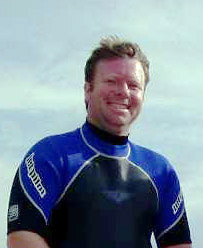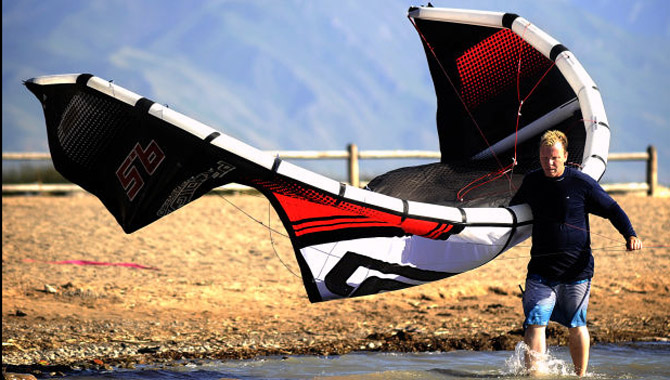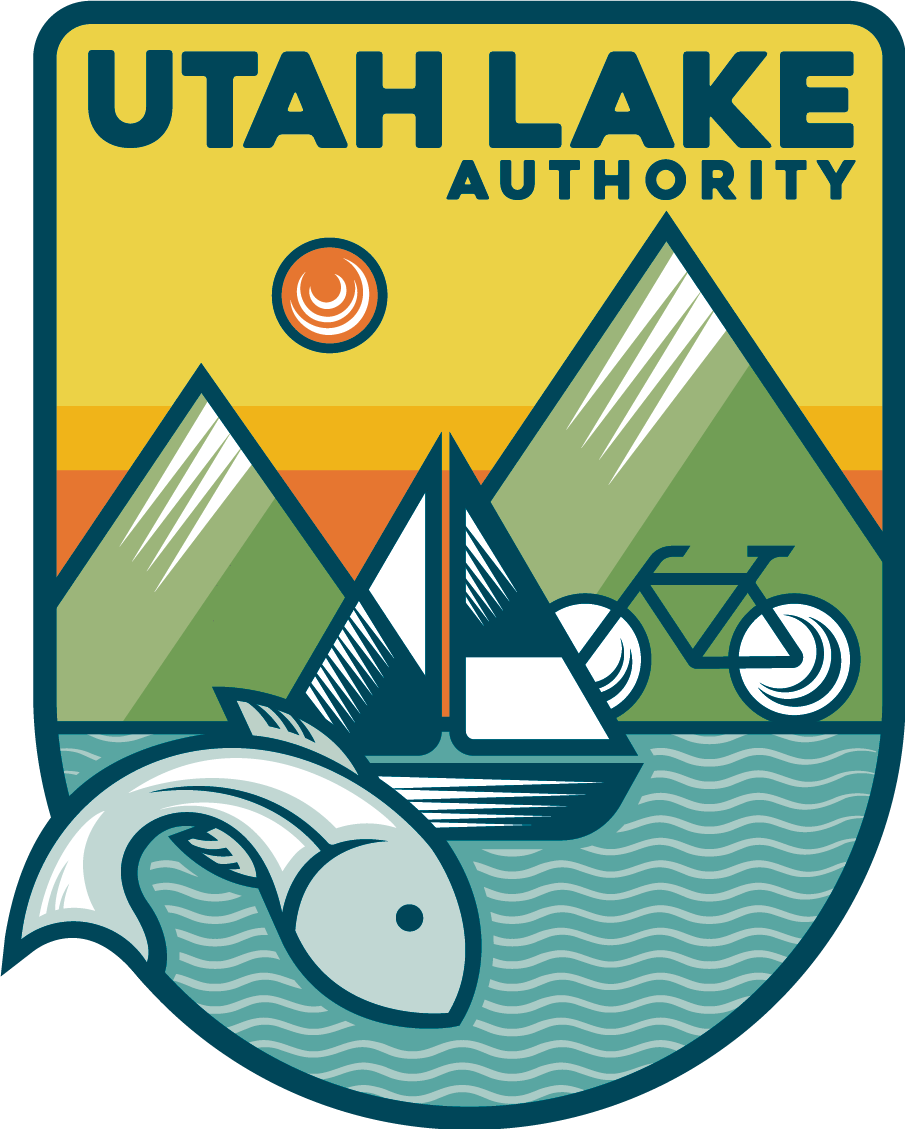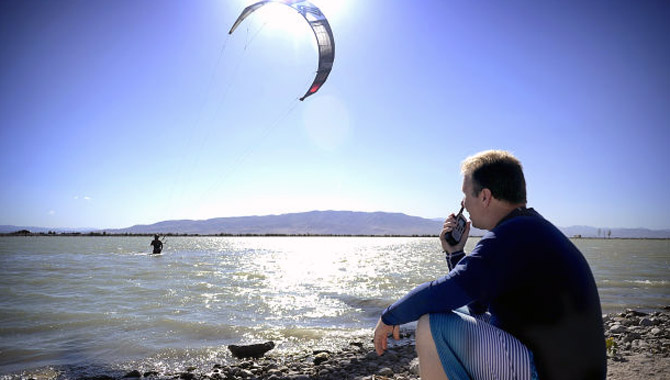There is a connection with beaches and Derik Sayers. After emigrating from England, his family settled on the west coast. Derik grew to love the beaches and the water. When they moved to Utah, he missed the opportunity to go to the ocean. However, he adjusted and found a new home at Utah Lake. He found he could enjoy Utah Lake beaches through kiteboarding.
Starting in March 2013, teaming up with Pinnacle Recreation Rentals & Cris Schultz, UKB Utah Kite Boarding will begin teaching kiteboarding lessons at Utah Lake State Park. Derik is excited to see kiteboarding at the park. “It is an intense sport,” he said, “but with lessons, proper safety precautions and the right gear, the potential for any injury decreases. It is a sport to be respected. Mother Nature gives us the power by wind and we can harness that power through the kite.”
Derik feels Utah Lake as a whole is great for kiteboarding, “because it is warm and shallow and gets great waves from the wind, which makes natural ramps to jump off.” Derik continues, “Utah is a great place for kiteboarding! There are so many places to ride here. There is water kiteboarding aka “KITESURFING”, there are the salt flats for land kiteboarding, and, we have incredible terrain for snow kiteboarding too.” He notes people can water kiteboard or kitesurf from March until Thanksgiving (wearing a wetsuit). He stated, “Kiteboarding at sunset on Utah Lake is beautiful! The sun is setting, beautiful orange skies, perfect wind, & steady 12-15 mph breeze. It is breathtaking to be kiteboarding on Utah Lake and hear only the sound of the wind blowing across your ears and see the sunset reflecting off the lake!”
Beginning in 2002, Derik’s passion became a career as he began teaching kiteboarding and opened the first and only kiteboarding school in Utah. Derik is a PASA certified, Level II, Kiteboarding Instructor. He instructs water, land, and snow kiteboarding. He has taught over 1000 students. UKB Utah Kite Boarding is the only school in the USA that offers skills-based training (called “Return to Learn”). Students pay a flat fee for each level of training and can return as often as they wish (at no extra charge) until they feel they have learned the skills for that level. “I love teaching kiteboarding lessons. Riding is fantastic, but it is also great to share the experience and knowledge with new students. I help them quickly build a passion and fire to go on and participate in the sport”, Derik said.
Derik has studied all aspects of the sport – wind, forecasting, gear, and proper application of fundamentals of kiteboarding. According to him, there are several things which help generate wind for kiteboarding on Utah Lake: temperature differences between Salt Lake and Utah Valleys, high and low pressure systems and the jet stream all help in building wind for kiteboarding. With 100 degree temperatures in the summer, the wind is generated more slowly. Any ride-able winds are dependent on pressure changes in the atmosphere. High pressure squashes the wind. Using website weather forecasting tools, Derik is able to predict within a 72 hour window, when the Kiteboarders can ride.
Kiteboarding/Kitesurfing equipment includes a kite, bar & lines, board, harness, and helmet.
The kite is anywhere from 5 square meters to 20 square meters in size, choice is based on wind speed and conditions. The kite has a leading edge and struts which are inflatable bladders and are manually filled with air. For the snow they also use foil kites, which have open cells that naturally fill with air. Inflatable kites are a must for water but can be used on snow also. Foil kites are good for snow.
 The Control Bar acts as an accelerator. The more it is pulled in, the faster the kite goes. There are four lines; two inside lines control power and the two outside lines are for steering.
The Control Bar acts as an accelerator. The more it is pulled in, the faster the kite goes. There are four lines; two inside lines control power and the two outside lines are for steering.
The Boards include: directional surfboards and twin-tip boards. The twin-tip boards, similar to a wake board, are bidirectional and can go either right or left. Kite boards have either straps, bindings, or are strapless. The twin-tip boards are flat on the bottom with no channeling and a lot of rocker (end-to-end camber). For the snow they use either snow boards or skis.
It is mandatory for kiteboarding students to wear a helmet to protect their head. They also use a waist harness or seat harness which gives them more control over the bar by using the Kiteboarders body core for stability. The kiteboarding students also wear a self-inflatable personal floatation device (PFD) much like a belt that clips on.
UKB Utah Kite Boarding is responsible for providing outstanding service and instruction ever since it was established in 2002. Derik encountered a sports-related accident on May 5, 2004. His injury did not stop him. Derik improves his abilities through physical therapy rehabilitation and he continues to teach.
For further information, see website: http://kiteukb.com or call UKB at 801-687-5216
ABOUT DERIK SAYERS:
Derik Sayers is a native of Lincolnshire, England. He is happily married to Colleen and they have two girls and two boys (youngest age 2), and one grandchild. He enjoys spending time with his family traveling, camping, & watching movies.
For additional insight into Derik Sayers, see Kiteboarding
Photos Courtesy: JAMES ROH/Daily Herald, heraldextra.com. Additional photo of Derik from kiteukb.

